Chimps at Humane Society Sanctuary Barely Get Outside. What Happens Next?
The News
Project Chimps, a 236-acre forested chimpanzee sanctuary in Georgia, features picturesque hiking trails, beautiful banquet facilities and festive events for visitors. What it does not feature, however, is far more remarkable: daily access for the chimpanzees to the 236 forested acres. Access to the forested habitats is so limited, in fact, that the 77 chimpanzees who live at this Humane Society of the United States (HSUS) facility get outside for just a few hours once every three days. It’s the antithesis of a chimp-centric sanctuary.
When, in May 2020, 22 Project Chimps’ employees and volunteers blew the whistle about this and several other serious animal welfare deficiencies at the sanctuary, local and national animal advocacy groups began to privately – and then publicly – demand that HSUS transform Project Chimps into a true sanctuary that meets the standards set by the Global Federation of Animal Sanctuaries (GFAS).
Before the whistleblowers came forward, animal advocates believed that Project Chimps was a true sanctuary. The photos and videos that Project Chimps posts online each day show chimpanzees moving freely through a lush habitat and basking in the sun — not languishing in concrete rooms. “The images of former research chimpanzees enjoying their ‘retirement’ don’t resemble their day-to-day lives behind bars,” said Lindsay Vanderhooght, a whistleblower who Project Chimps sued for defamation. “Images that depict the true conditions in which the chimpanzees live wouldn’t bring in donations, so Project Chimps is engaging in greenwashing.”
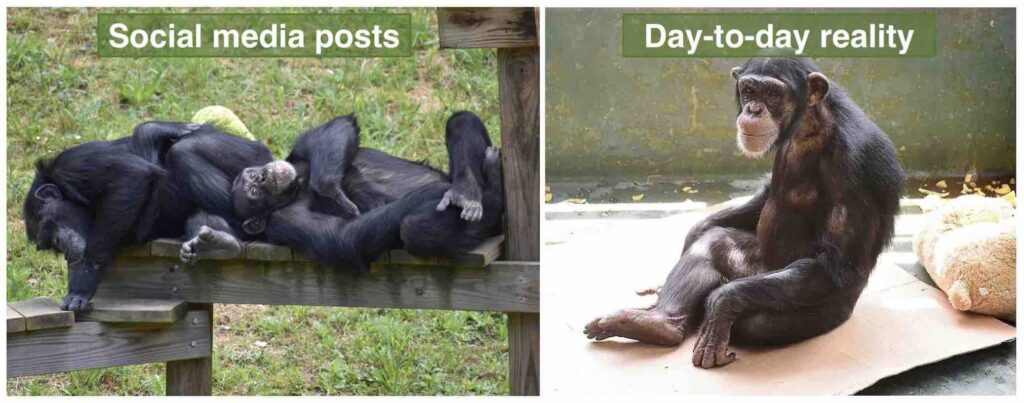
Project Chimps’ social media posts give the impression that the chimpanzees spend their days outdoors.
While Project Chimps does acknowledge that the chimps have access to the habitat just once every three days, it claims that the “porches” where the chimps spend their days are also outdoors. This is not true; the porches are covered concrete rooms that merely have a view of the outdoors through metal bars.
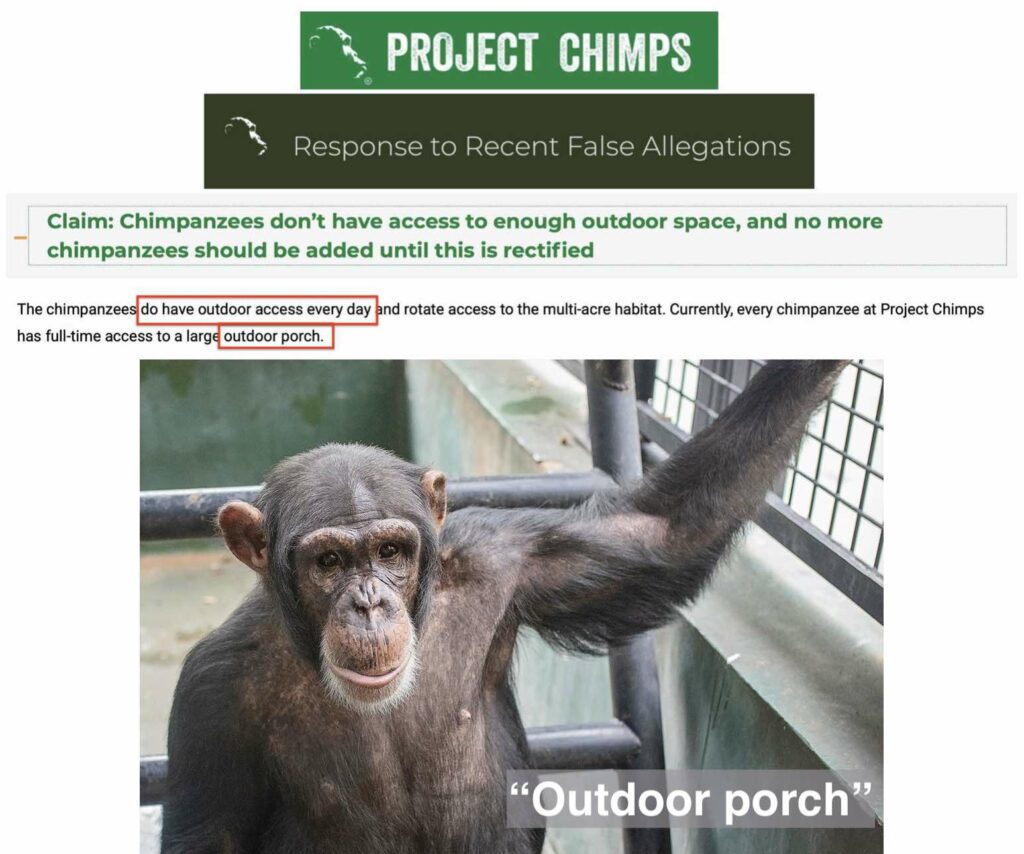
Project Chimps claims that the chimpanzees have access to the outdoors every day on “outdoor porches,” but the porches are covered concrete rooms with metal bars
According to animal caregivers who worked at Project Chimps, the incessant confinement in overcrowded spaces with minimal enrichment has triggered and/or exacerbated stereotypic behaviors, such as hair plucking, feces smearing, pacing and swaying. After whistleblowers posted videos of these behaviors, Project Chimps attempted to downplay them in a blog post entitled, “Is Anyone Normal?” While Project Chimps accurately states that chimpanzees display these behaviors if their environment doesn’t enable them to fulfill their behavioral needs, it doesn’t acknowledge its role is causing these behaviors and the gravity and extent of the problem at its own facility.
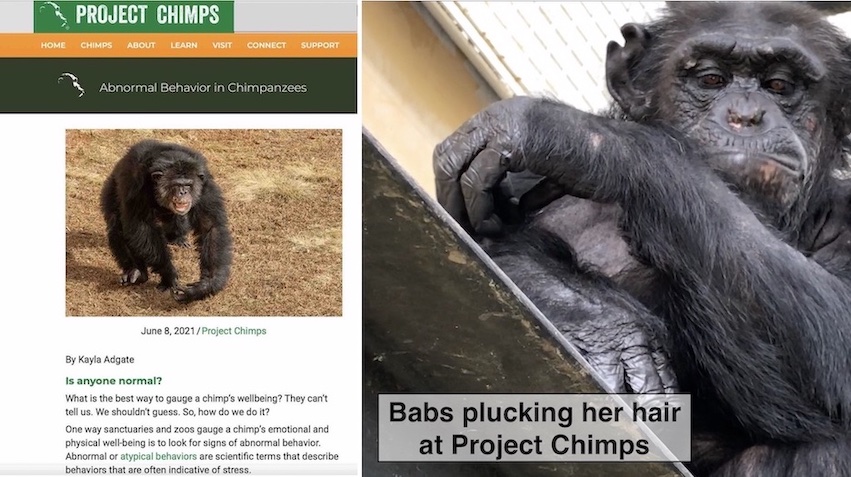
Project Chimps posted an article about abnormal chimpanzee behaviors without acknowledging its role in causing them
Project Chimps occupies 236 acres, but only six of them serve as an outdoor habitat for the chimpanzees. This habitat is divided into two yards. Each day, Project Chimps rotates one group of chimps into each yard for a few hours. Because Project Chimps currently has five groups, each group has access to a yard just once every three days.
For the past several months, advocates have asked Project Chimps to implement a temporary fix until additional yards are created. Instead of rotating one group of chimps into each yard in the middle of the day, Project Chimps could rotate two groups of chimps into each yard every day – one in the morning and one in the afternoon. That schedule would give the chimps access to the outdoors four or five times per week instead of two or three times.
Another temporary fix would be to split the six acre habitat into five yards instead of two – one yard for each of the buildings (“villas”) that house the chimps. That would provide the chimps with unfettered access to the outdoors every day.
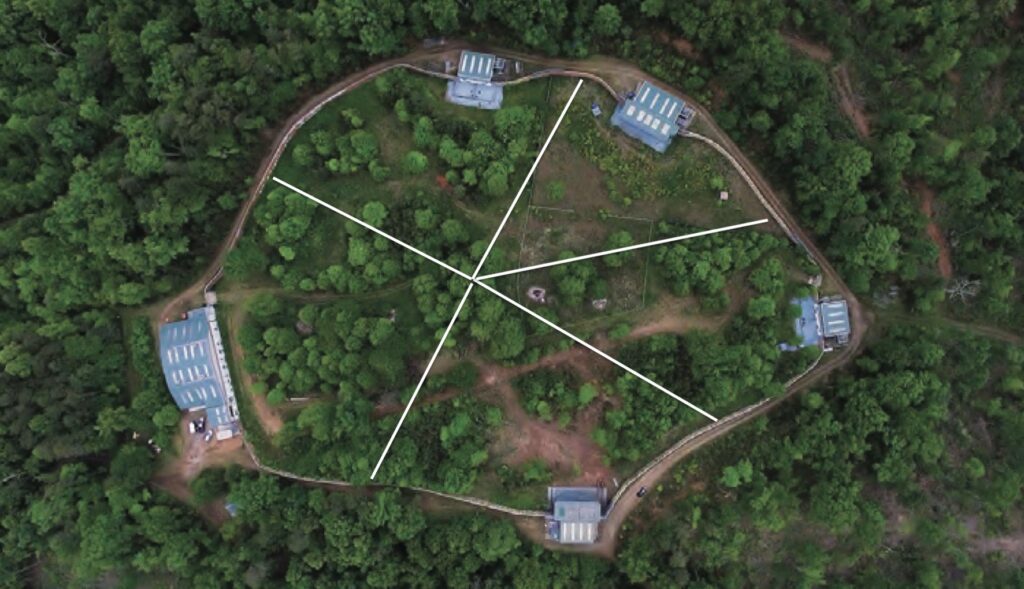
If Project Chimps split the six acre habitat into five yards instead of two, then all of the chimps could have access to the outdoors every day instead of every three days
Over the past year, the Nonhuman Rights Project (NhRP), an advocacy group that litigates on behalf of captive animals, has issued several public statements calling on HSUS to give its clients Hercules and Leo, who they liberated from a lab, daily access to an outdoor habitat. Following are excerpts from its first statement, posted in October, 2020:
“In 2018, after Hercules and Leo arrived at Project Chimps, we wrote to Kitty Block, president of HSUS, on behalf of our clients and presented our serious and well-founded concerns about Project Chimps’ capacity to provide appropriate care to Hercules and Leo, especially regarding daily access to an outdoor habitat, which is essential to chimpanzees’ ability to exercise their autonomy and their physical and psychological health. Ms. Block dismissed our concerns, writing that HSUS is ‘confident that Project Chimps will devote the resources necessary to provide the best lifetime care to all of the chimpanzees at its sanctuary, including Hercules and Leo.’”
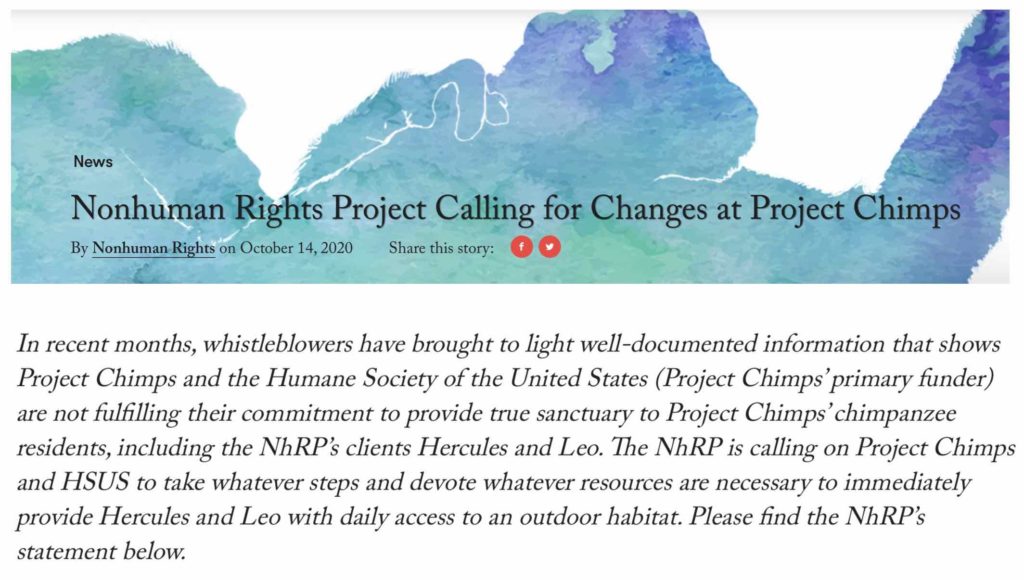
The Nonhuman Rights Project is calling out the Humane Society for its failure to fulfill the promises they made to Hercules and Leo after they were liberated from a lab.
“We have learned and Project Chimps does not dispute, that Hercules and Leo are confined to an indoor housing structure with cement floors and an enclosed porch all but ten hours a week. Project Chimps’ Executive Director told us they expect the earliest they will receive daily outdoor access is in two years. In our view, this timeline is an unacceptable failure to live up to Project Chimps’ founding promise: lifelong exemplary care for chimpanzees retired from research.”
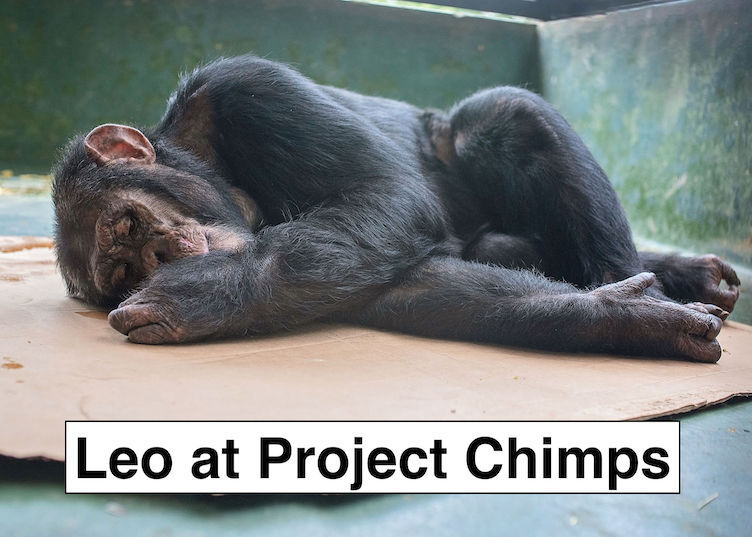
The Nonhuman Rights Project is calling on The Humane Society of the United States to provide its clients, Hercules and Leo, with daily access to an outdoor yard.
In June, Project Chimps posted an article written by an artist who painted a mural inside of a chimpanzee enclosure: “Murals Enrich Lives of Endangered Chimps in North Georgia.” According to chimpanzee caregivers, murals might serve as a distraction for a few minutes, but they wouldn’t enrich the lives of the chimps any more than murals in zoos enrich the lives of those captive animals. True chimp-centric enrichment engages the minds and bodies of the chimps who, by virtue of living in captivity, cannot perform the activities that would keep them engaged in their natural habitat. Also, paintings of elements from nature or the animals’ natural habitat can frustrate the animals, who crave the real thing. To the tourists passing through and people on social media, however, the decorative walls leave a better impression than flaking grey paint on concrete.
In the article about murals, the Executive Director of Project Chimps, Ali Crumpacker, states, “They [the chimpanzees] gave so much to humanity. It’s time to give back.” Warehousing chimpanzees in concrete rooms (with murals) is not “giving back” to them. It is taking away what few pleasures they could have in captivity. In response to Crumpacker’s remarks, Cory Mac, an organizer in the campaign to help the chimpanzees, said, “Painting murals is a cynical waste of resources; the time and money spent on these projects should have been devoted to chimp-centric activities. Also, the chimps never “gave” themselves to humanity. Their freedom was taken away from them against their will.”
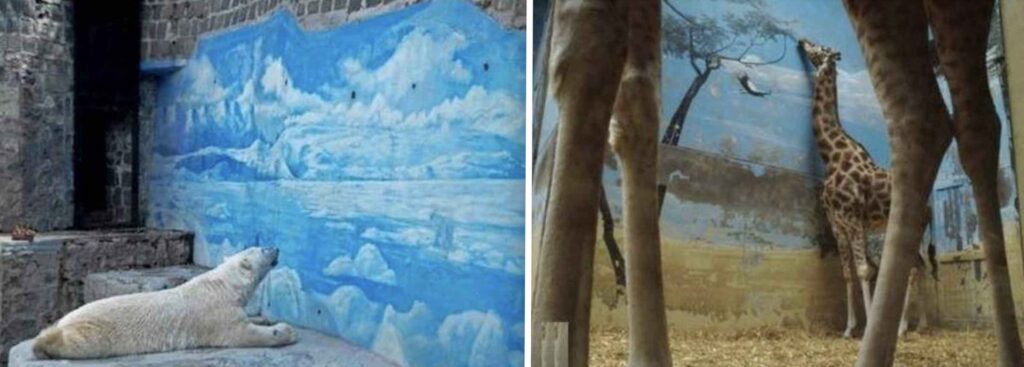
The murals on the walls at Project Chimps are no more enriching for the chimpanzees than zoo mural are for the captive animals who are put on display
Despite the fact that the chimpanzees spend their days in concrete rooms, HSUS has used its PR machine to lead the public and its donors into believing that Project Chimps is a true sanctuary, and The Global Federation of Animal Sanctuaries (GFAS) is enabling HSUS to perpetuate this falsehood. GFAS, a global sanctuary accrediting organization, continues to accredit Project Chimps despite the fact that it does not meet many of the standards it sets for great ape sanctuaries. In fact, whistleblowers at Project Chimps identified 21 examples.
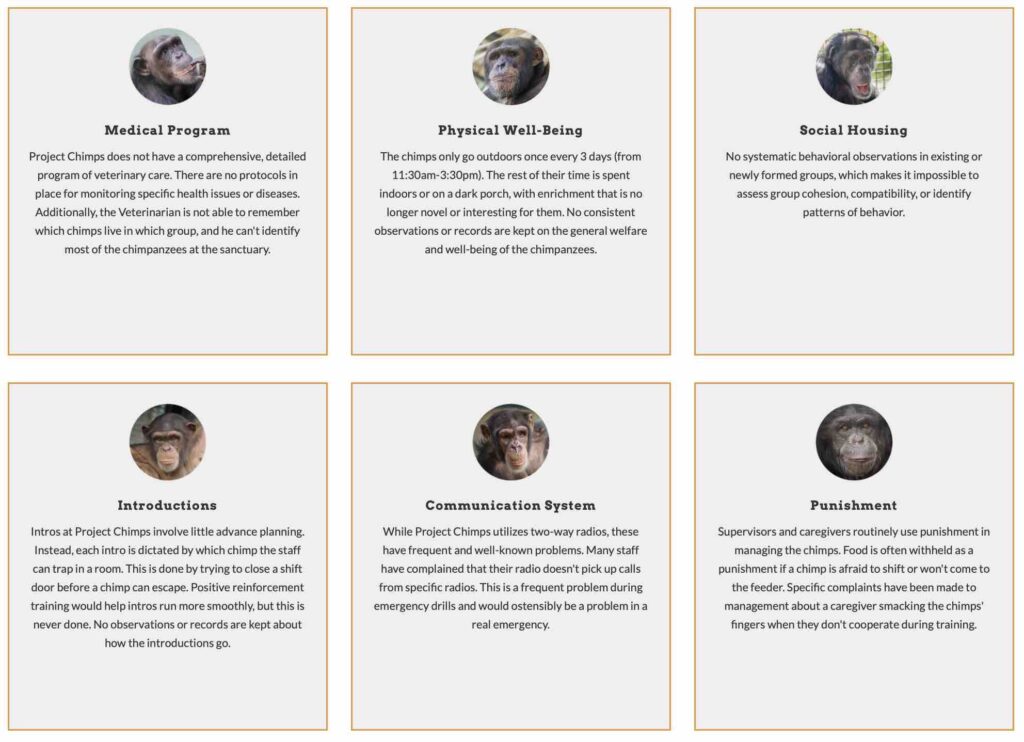
Whistleblowers documented 21 conditions at Project Chimps that fail to meet GFAS standards for great ape sanctuaries. Click the illustration to see all 21 conditions.
Puzzled by the GFAS accreditation, TheirTurn researched the relationship between GFAS and HSUS and identified several conflicts of interests, outlined in detail in another article. In short, GFAS is comprised of people affiliated with HSUS; has administrative ties to HSUS; and is partially funded by HSUS. How can GFAS make unbiased assessments of an HSUS sanctuary if HSUS is one of its donors?
GFAS defines a sanctuary as “any facility providing temporary or permanent safe haven to animals in need while meeting the principles of true sanctuaries: providing excellent and humane care for their animals in a non-exploitative environment.” GFAS knows that the chimpanzees are not receiving excellent or humane care. Project Chimps doesn’t even have a veterinarian on staff with primate experience. It also knows that, by transforming Project Chimps into a tourist attraction, HSUS is not creating a “non-exploitive environment.”
In May 2021, Project Chimps held a ribbon cutting ceremony – with no sense of irony – to announce the opening of new hiking trails for visitors. “The hiking trails are one of many amenities designed to entertain visitors, but true sanctuaries are created for and designed around the needs of animals, not visitors,” said Bob Ingersoll, a primatologist who advocates on behalf of captive chimpanzees. “If Project Chimps is going to hold a ribbon cutting ceremony, it should be to announce the creation of new outdoor yards or a clinic for the chimps, not a tourist concession.”
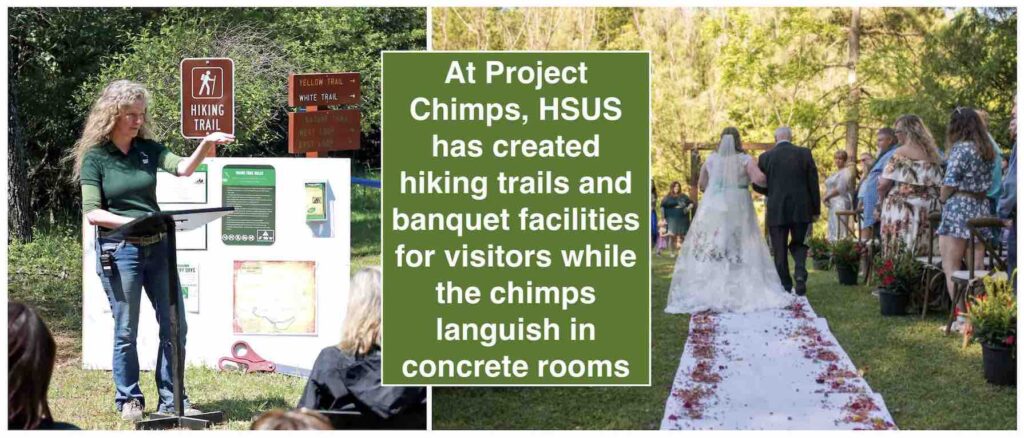
At Project Chimps, HSUS has prioritized amenities for tourists ahead of some of the basic needs of the chimps.
On July 2nd, 2021 Kitty Block, the CEO of HSUS, issued the following statement in response to a letter-writing campaign calling on her to improve animal welfare at Project Chimps: “The HSUS has clearly communicated that we agree with Project Chimps’ longstanding plan to build out its facilities and staff to support more time in outdoor habitat space for all the chimps at the sanctuary, and that we’ll be directing our future financial support of the sanctuary toward those priority needs.” While advocates are glad that HSUS is finally acknowledging the need to build yards for the chimps, Ms. Block’s statement begs many questions:
- If Project Chimps was meant to be a sanctuary where “chimpanzees will thrive” and “make their own decisions on how they live,” then why didn’t HSUS create sufficient outdoor areas six years ago — before they began bringing in the chimpanzees?
- What is HSUS’s plan and timeline to create new habitats?
- What steps will Project Chimps take now to increase outdoor time in the existing habitat?
- Why does the Global Federation of Animal Sanctuaries (GFAS) continue to accredit a sanctuary that provides its animals with so little time outdoors and that prioritizes amenities for tourists ahead of the some of the basic needs of the animals?
Filed under: Experimentation
Tagged with: Humane Society International, Humane Society of the United States, Project Chimps



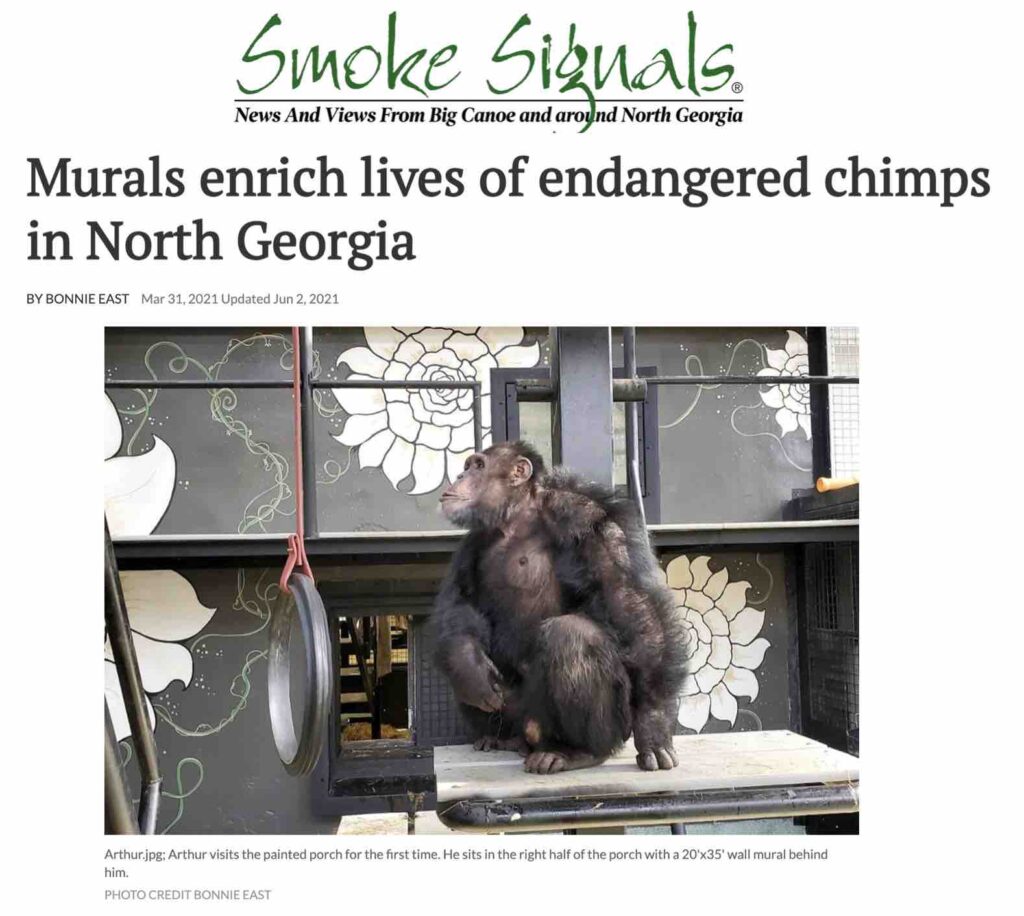
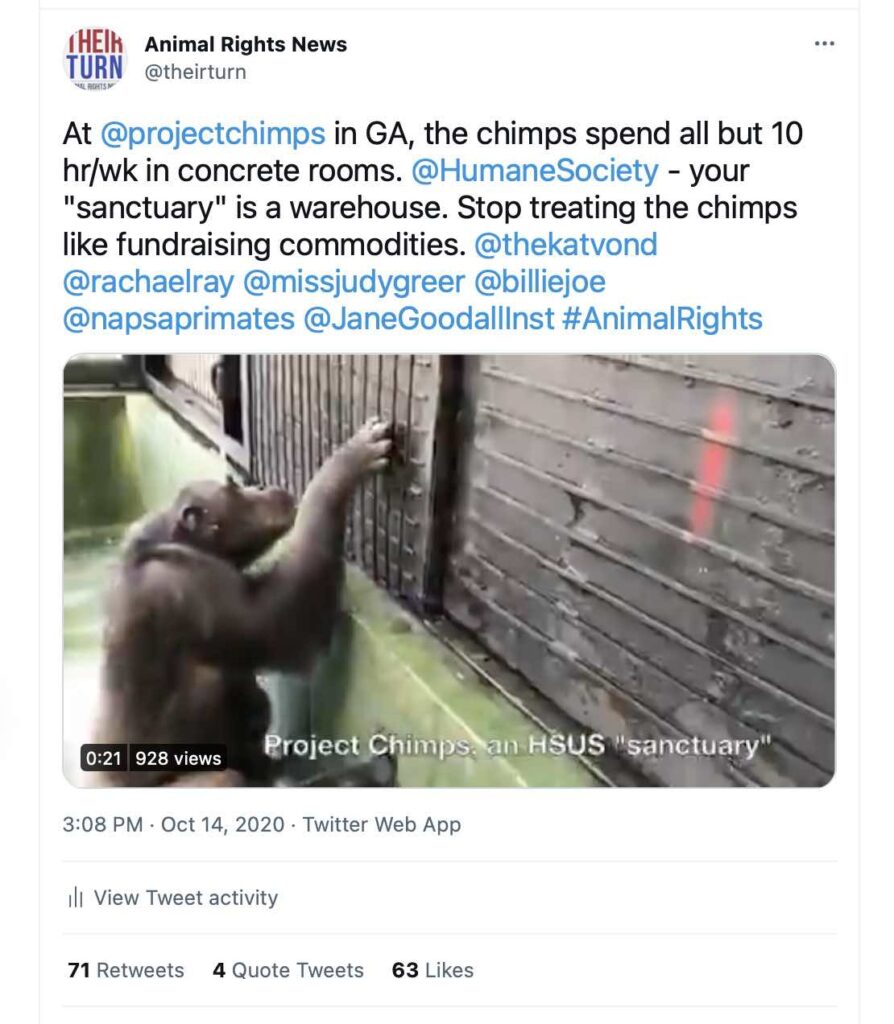


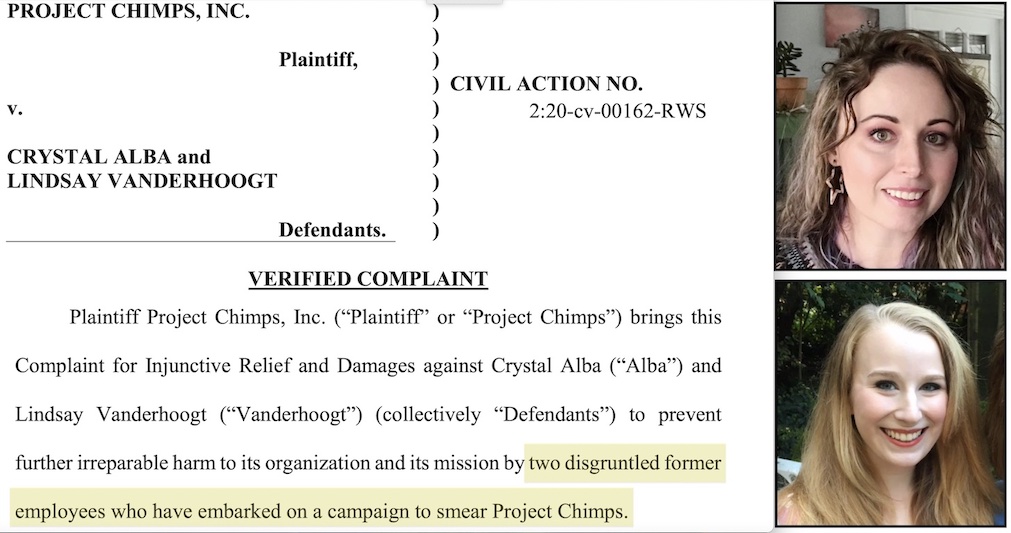
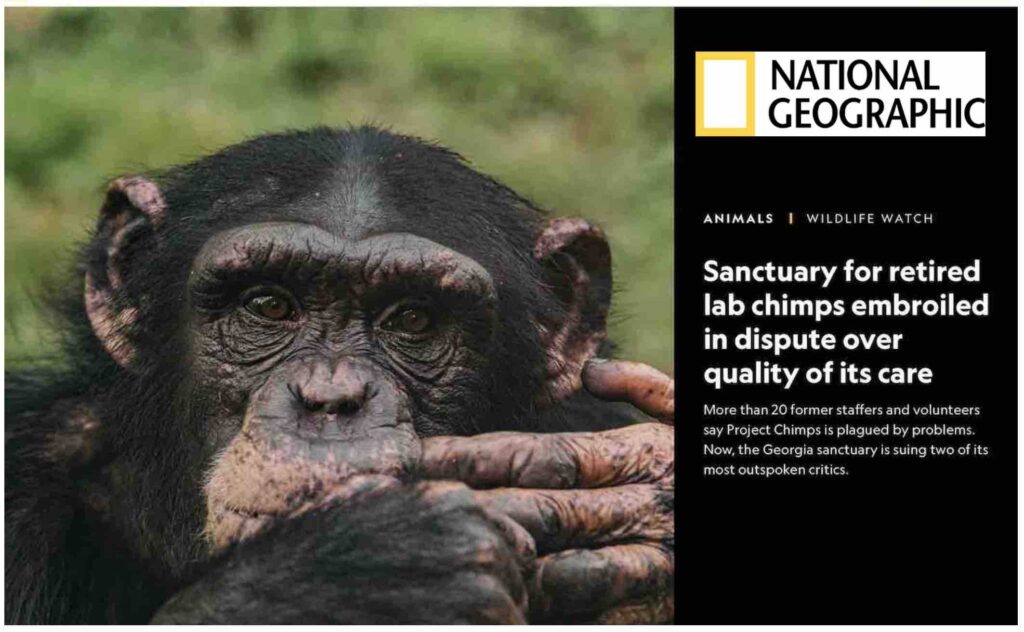
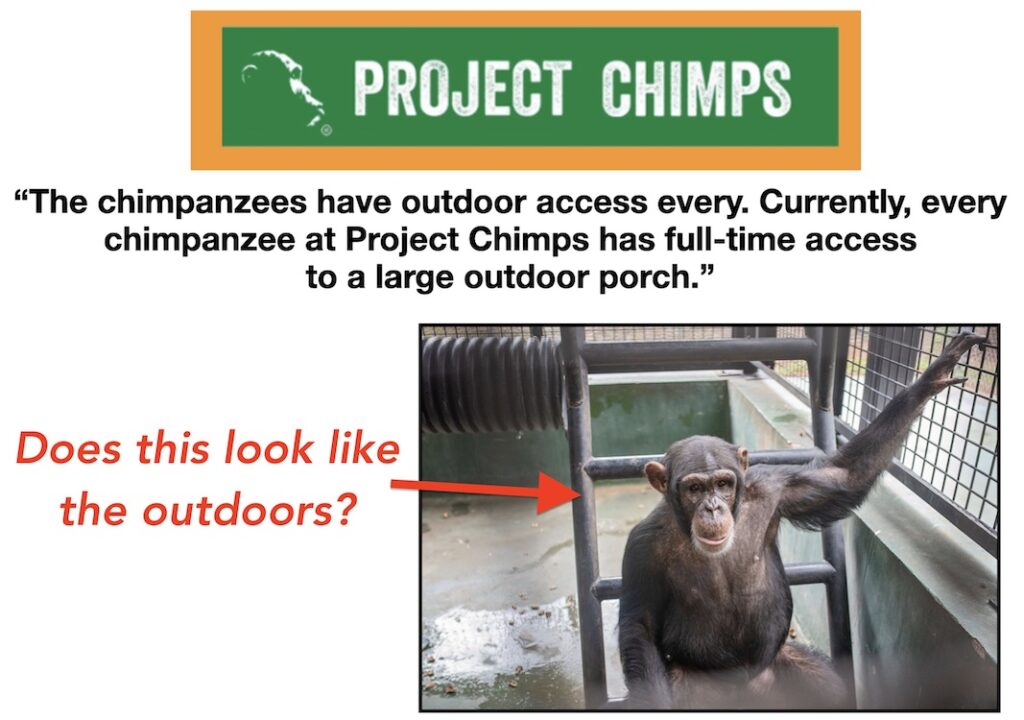

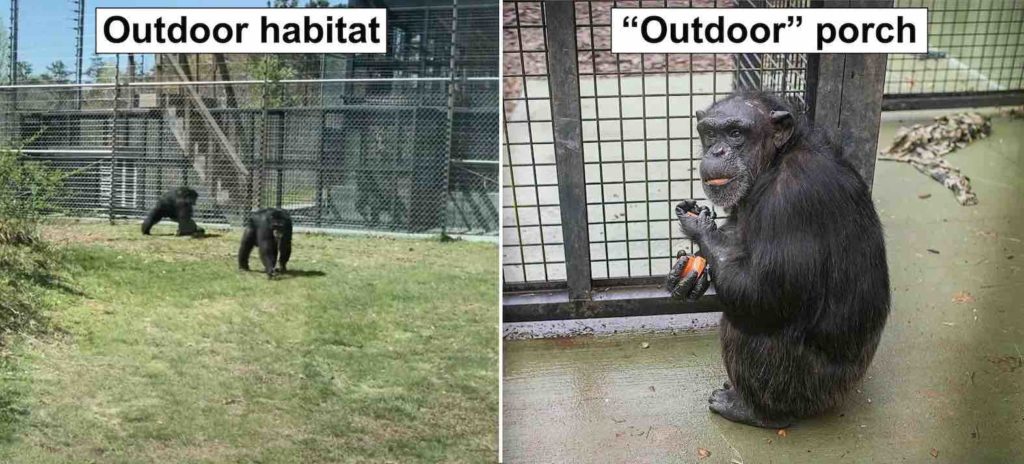
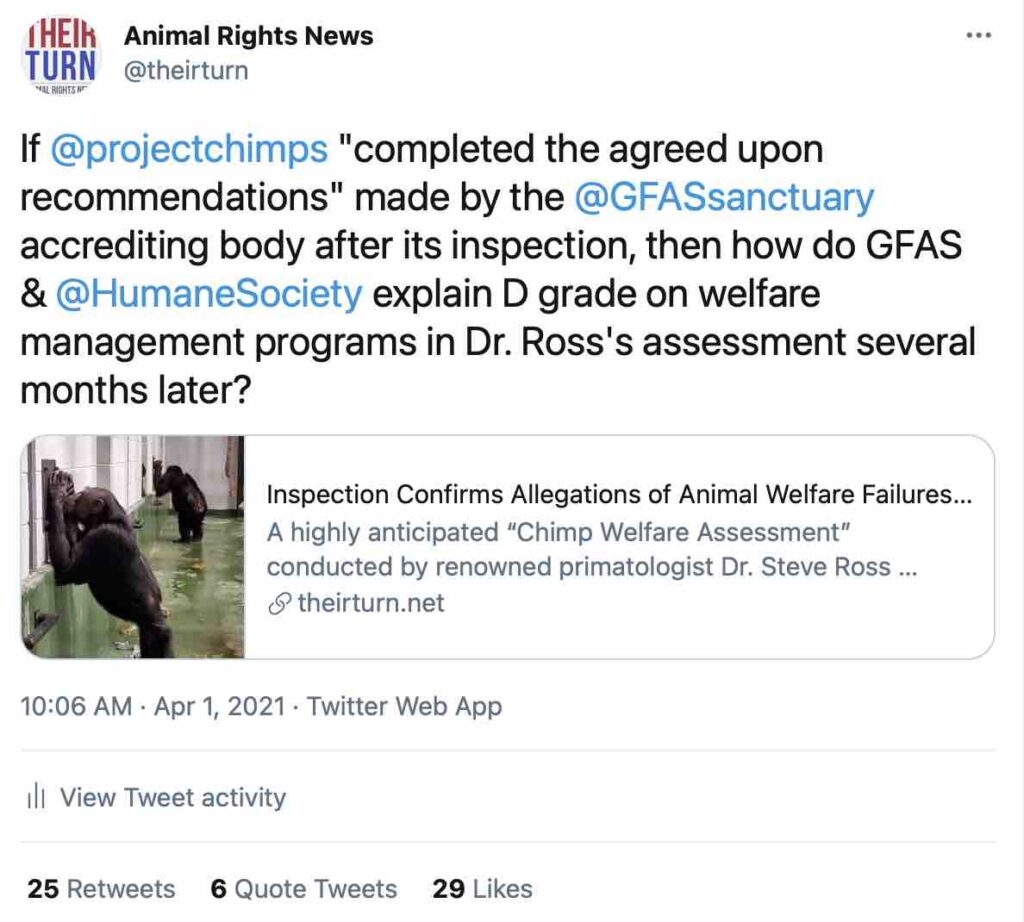
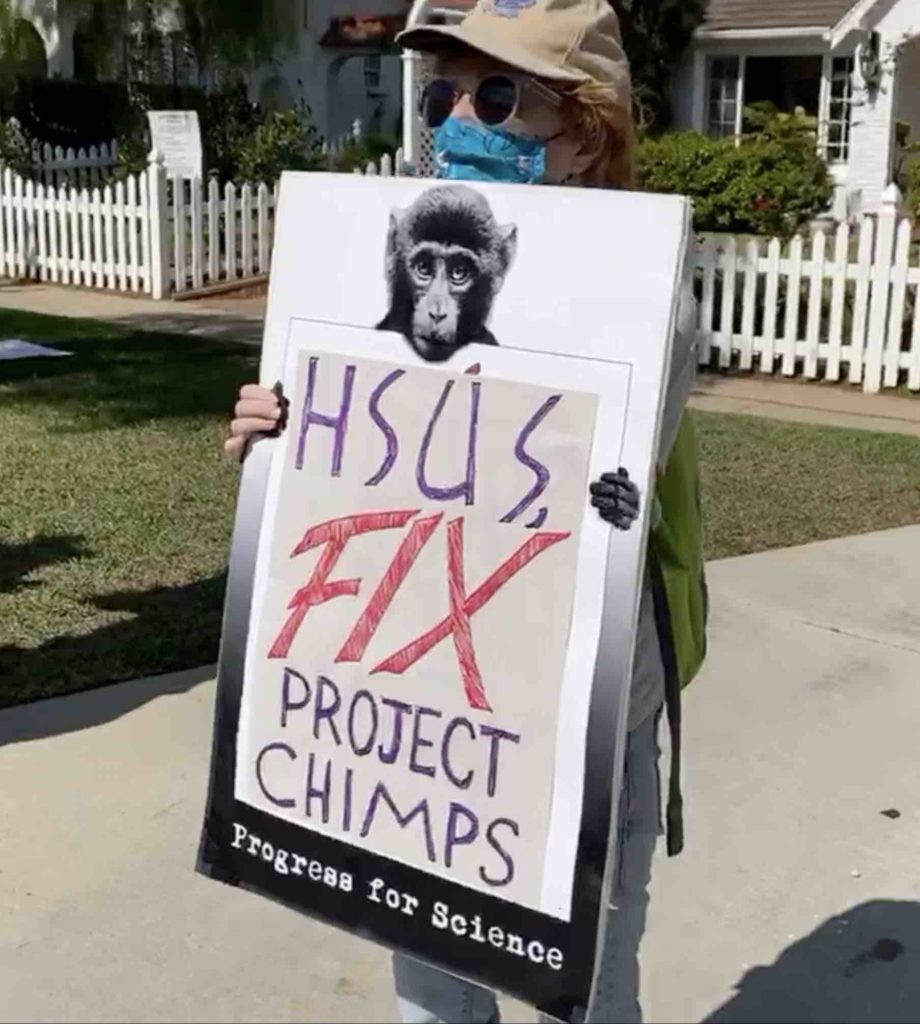

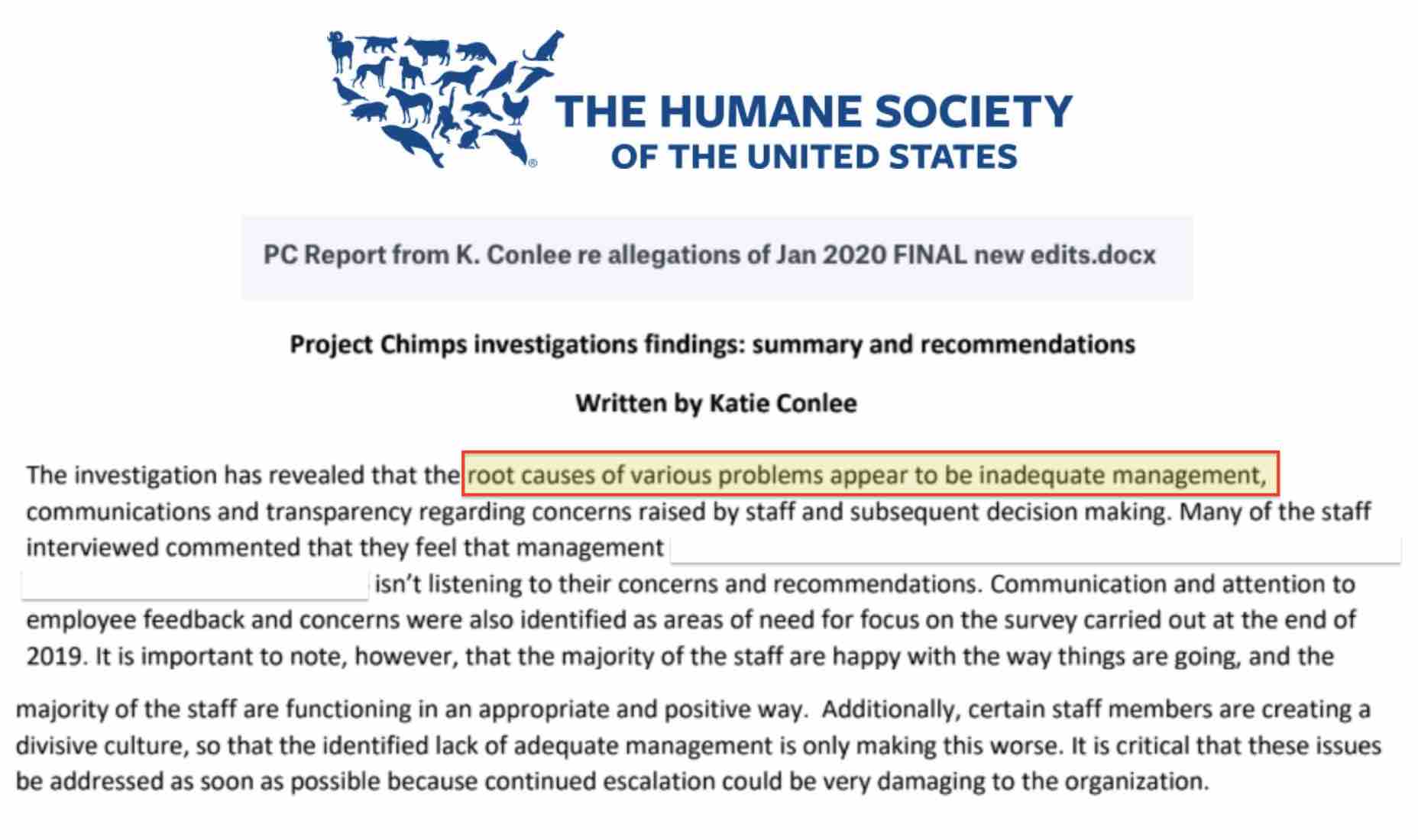
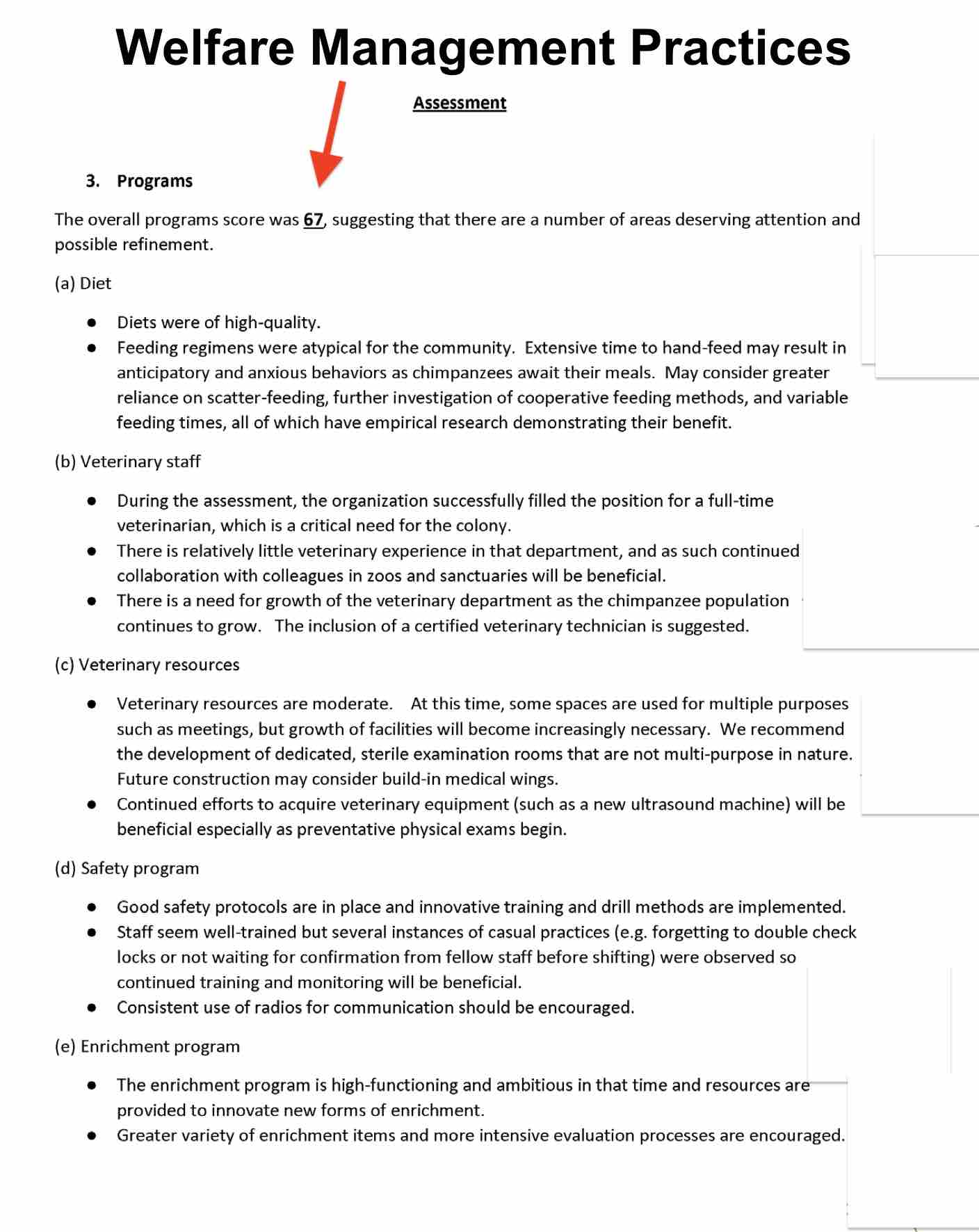
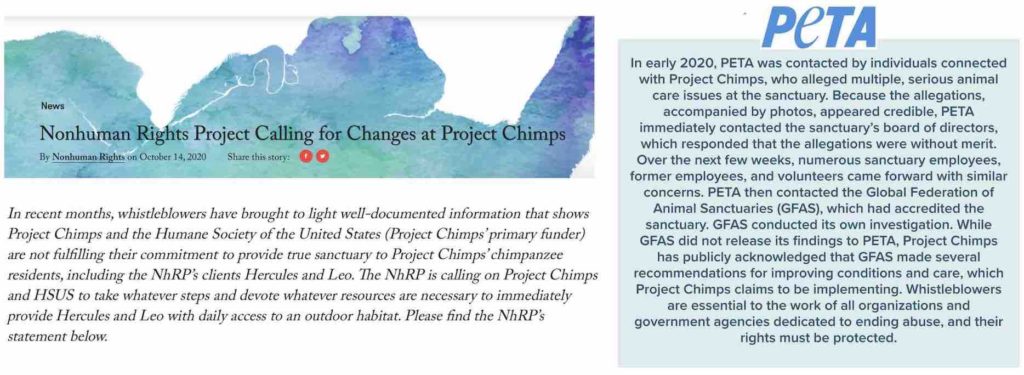
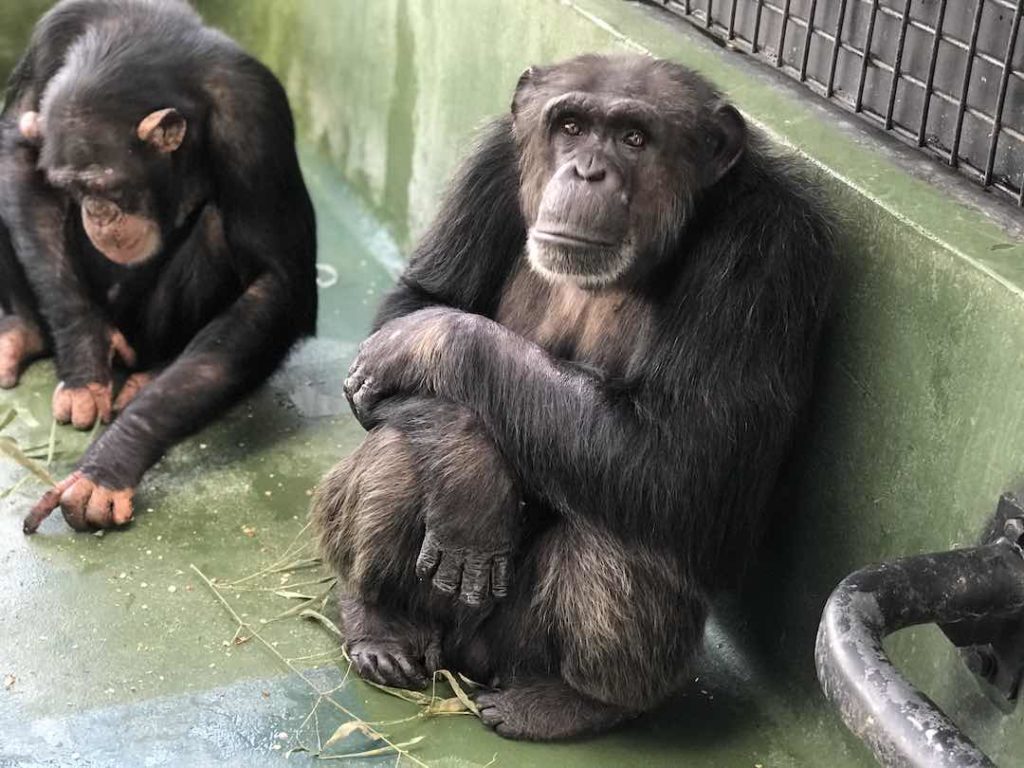
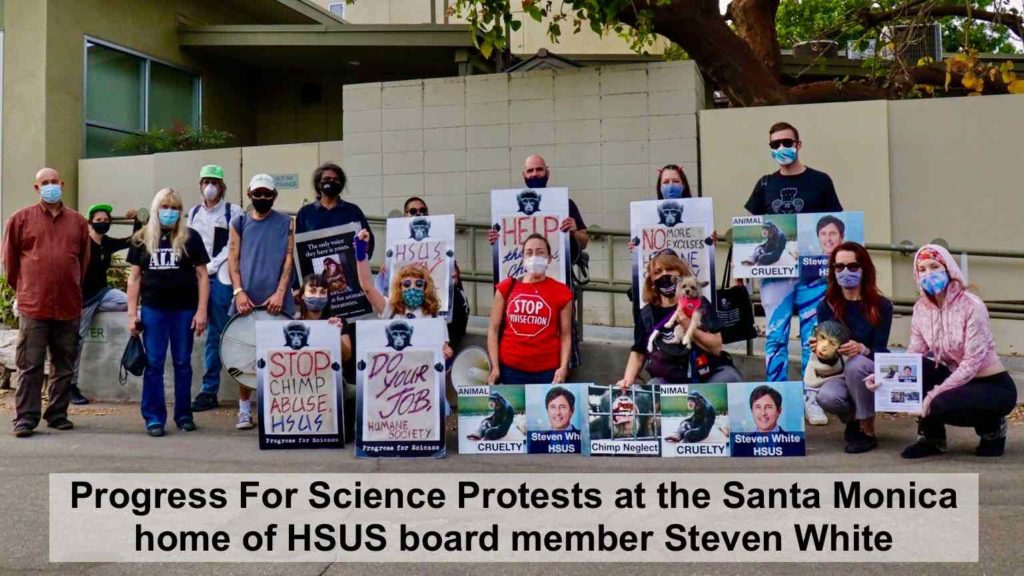
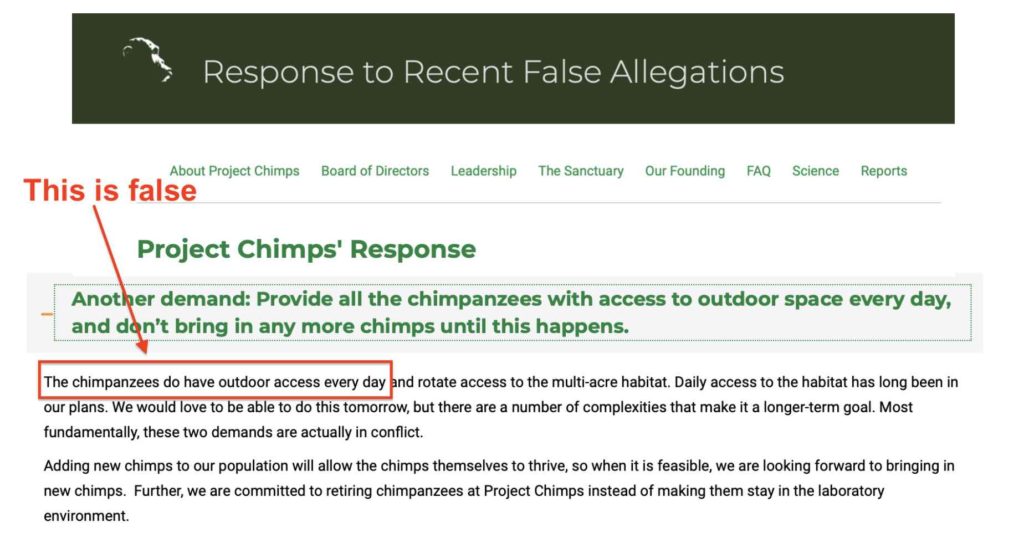
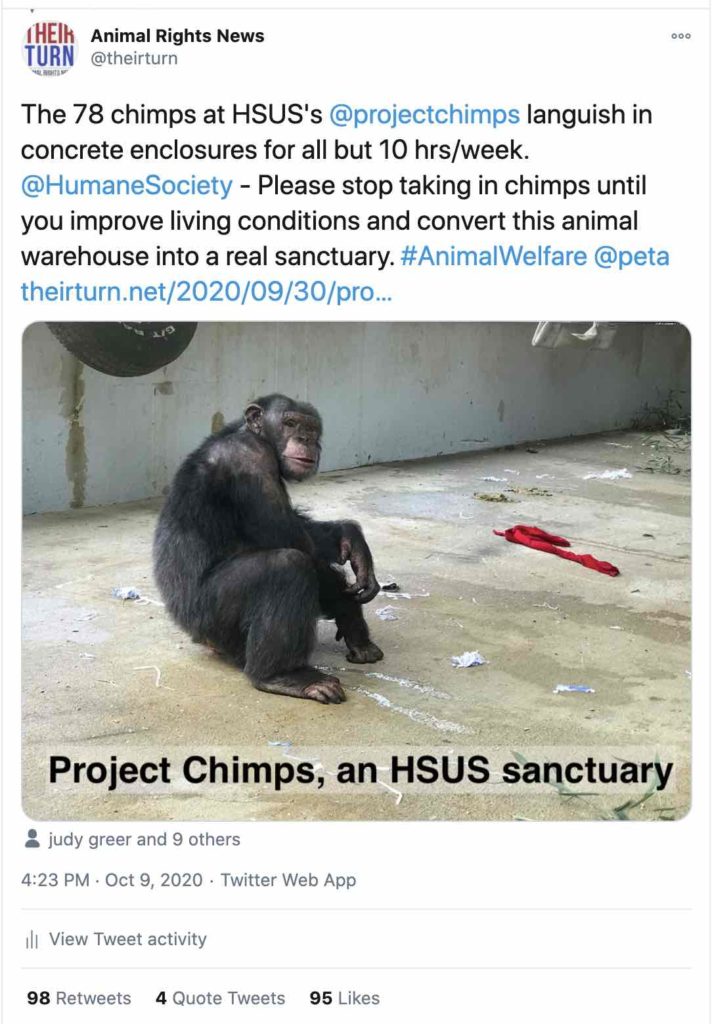
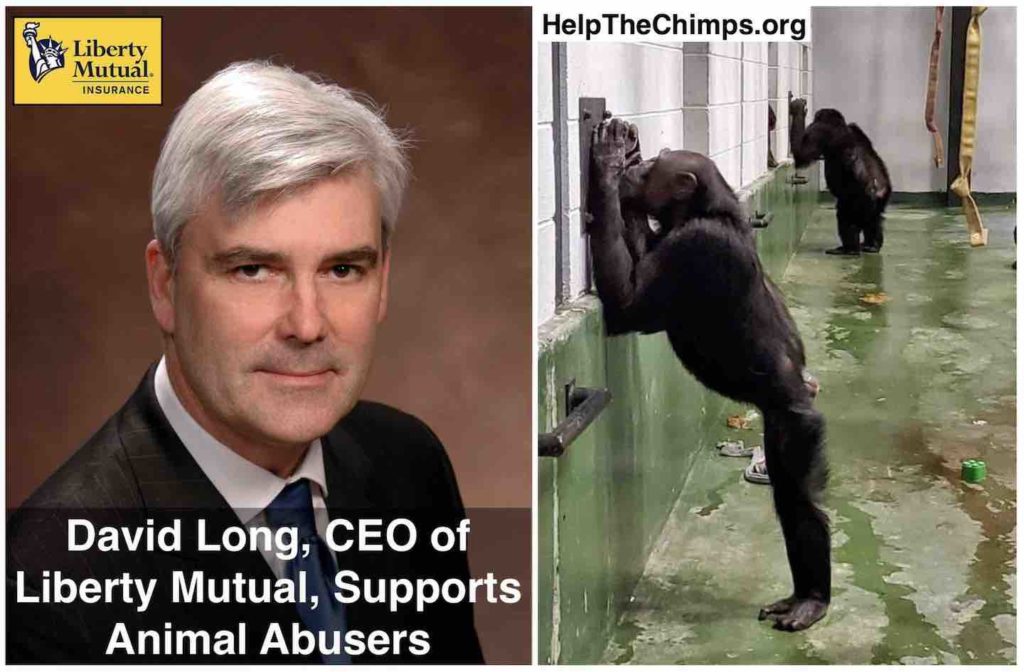
Follow Their Turn